US Airways 2008 Annual Report Download - page 20
Download and view the complete annual report
Please find page 20 of the 2008 US Airways annual report below. You can navigate through the pages in the report by either clicking on the pages listed below, or by using the keyword search tool below to find specific information within the annual report.-
 1
1 -
 2
2 -
 3
3 -
 4
4 -
 5
5 -
 6
6 -
 7
7 -
 8
8 -
 9
9 -
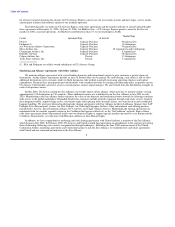 10
10 -
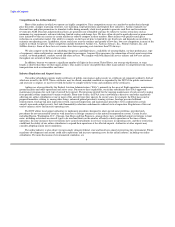 11
11 -
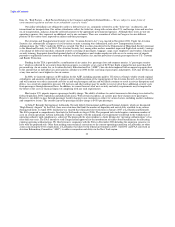 12
12 -
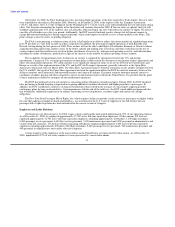 13
13 -
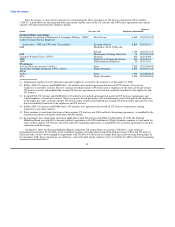 14
14 -
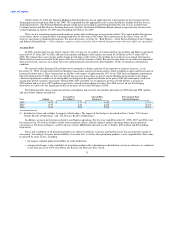 15
15 -
 16
16 -
 17
17 -
 18
18 -
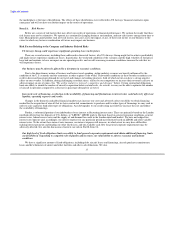 19
19 -
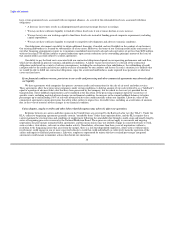 20
20 -
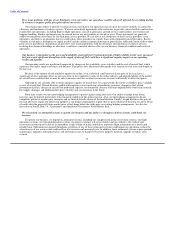 21
21 -
 22
22 -
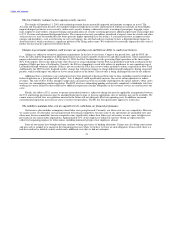 23
23 -
 24
24 -
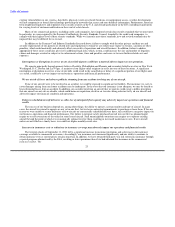 25
25 -
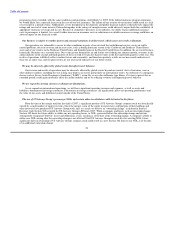 26
26 -
 27
27 -
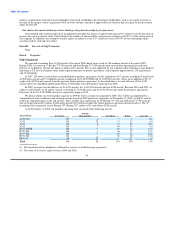 28
28 -
 29
29 -
 30
30 -
 31
31 -
 32
32 -
 33
33 -
 34
34 -
 35
35 -
 36
36 -
 37
37 -
 38
38 -
 39
39 -
 40
40 -
 41
41 -
 42
42 -
 43
43 -
 44
44 -
 45
45 -
 46
46 -
 47
47 -
 48
48 -
 49
49 -
 50
50 -
 51
51 -
 52
52 -
 53
53 -
 54
54 -
 55
55 -
 56
56 -
 57
57 -
 58
58 -
 59
59 -
 60
60 -
 61
61 -
 62
62 -
 63
63 -
 64
64 -
 65
65 -
 66
66 -
 67
67 -
 68
68 -
 69
69 -
 70
70 -
 71
71 -
 72
72 -
 73
73 -
 74
74 -
 75
75 -
 76
76 -
 77
77 -
 78
78 -
 79
79 -
 80
80 -
 81
81 -
 82
82 -
 83
83 -
 84
84 -
 85
85 -
 86
86 -
 87
87 -
 88
88 -
 89
89 -
 90
90 -
 91
91 -
 92
92 -
 93
93 -
 94
94 -
 95
95 -
 96
96 -
 97
97 -
 98
98 -
 99
99 -
 100
100 -
 101
101 -
 102
102 -
 103
103 -
 104
104 -
 105
105 -
 106
106 -
 107
107 -
 108
108 -
 109
109 -
 110
110 -
 111
111 -
 112
112 -
 113
113 -
 114
114 -
 115
115 -
 116
116 -
 117
117 -
 118
118 -
 119
119 -
 120
120 -
 121
121 -
 122
122 -
 123
123 -
 124
124 -
 125
125 -
 126
126 -
 127
127 -
 128
128 -
 129
129 -
 130
130 -
 131
131 -
 132
132 -
 133
133 -
 134
134 -
 135
135 -
 136
136 -
 137
137 -
 138
138 -
 139
139 -
 140
140 -
 141
141 -
 142
142 -
 143
143 -
 144
144 -
 145
145 -
 146
146 -
 147
147 -
 148
148 -
 149
149 -
 150
150 -
 151
151 -
 152
152 -
 153
153 -
 154
154 -
 155
155 -
 156
156 -
 157
157 -
 158
158 -
 159
159 -
 160
160 -
 161
161 -
 162
162 -
 163
163 -
 164
164 -
 165
165 -
 166
166 -
 167
167 -
 168
168 -
 169
169 -
 170
170 -
 171
171 -
 172
172 -
 173
173 -
 174
174 -
 175
175 -
 176
176 -
 177
177 -
 178
178 -
 179
179 -
 180
180 -
 181
181 -
 182
182 -
 183
183 -
 184
184 -
 185
185 -
 186
186 -
 187
187 -
 188
188 -
 189
189 -
 190
190 -
 191
191 -
 192
192 -
 193
193 -
 194
194 -
 195
195 -
 196
196 -
 197
197 -
 198
198 -
 199
199 -
 200
200 -
 201
201 -
 202
202 -
 203
203 -
 204
204 -
 205
205 -
 206
206 -
 207
207 -
 208
208 -
 209
209 -
 210
210 -
 211
211 -
 212
212 -
 213
213 -
 214
214 -
 215
215 -
 216
216 -
 217
217 -
 218
218 -
 219
219 -
 220
220 -
 221
221 -
 222
222 -
 223
223 -
 224
224 -
 225
225 -
 226
226 -
 227
227 -
 228
228 -
 229
229 -
 230
230 -
 231
231 -
 232
232 -
 233
233 -
 234
234 -
 235
235 -
 236
236 -
 237
237 -
 238
238 -
 239
239 -
 240
240 -
 241
241 -
 242
242 -
 243
243 -
 244
244 -
 245
245 -
 246
246 -
 247
247 -
 248
248 -
 249
249 -
 250
250 -
 251
251 -
 252
252 -
 253
253 -
 254
254 -
 255
255 -
 256
256 -
 257
257 -
 258
258 -
 259
259 -
 260
260 -
 261
261 -
 262
262 -
 263
263 -
 264
264 -
 265
265 -
 266
266 -
 267
267 -
 268
268 -
 269
269 -
 270
270 -
 271
271 -
 272
272 -
 273
273 -
 274
274 -
 275
275 -
 276
276 -
 277
277 -
 278
278 -
 279
279 -
 280
280 -
 281
281 -
 282
282 -
 283
283 -
 284
284 -
 285
285 -
 286
286 -
 287
287 -
 288
288 -
 289
289 -
 290
290 -
 291
291 -
 292
292 -
 293
293 -
 294
294 -
 295
295 -
 296
296 -
 297
297 -
 298
298 -
 299
299 -
 300
300 -
 301
301 -
 302
302 -
 303
303 -
 304
304 -
 305
305 -
 306
306 -
 307
307 -
 308
308 -
 309
309 -
 310
310 -
 311
311 -
 312
312 -
 313
313 -
 314
314 -
 315
315 -
 316
316 -
 317
317 -
 318
318 -
 319
319 -
 320
320 -
 321
321 -
 322
322 -
 323
323 -
 324
324 -
 325
325 -
 326
326 -
 327
327 -
 328
328 -
 329
329 -
 330
330 -
 331
331 -
 332
332 -
 333
333 -
 334
334 -
 335
335 -
 336
336 -
 337
337 -
 338
338 -
 339
339 -
 340
340 -
 341
341 -
 342
342 -
 343
343 -
 344
344 -
 345
345 -
 346
346 -
 347
347 -
 348
348 -
 349
349 -
 350
350 -
 351
351 -
 352
352 -
 353
353 -
 354
354 -
 355
355 -
 356
356 -
 357
357 -
 358
358 -
 359
359 -
 360
360 -
 361
361 -
 362
362 -
 363
363 -
 364
364 -
 365
365 -
 366
366 -
 367
367 -
 368
368 -
 369
369 -
 370
370 -
 371
371 -
 372
372 -
 373
373 -
 374
374 -
 375
375 -
 376
376 -
 377
377 -
 378
378 -
 379
379 -
 380
380 -
 381
381 -
 382
382 -
 383
383 -
 384
384 -
 385
385 -
 386
386 -
 387
387 -
 388
388 -
 389
389 -
 390
390 -
 391
391 -
 392
392 -
 393
393 -
 394
394 -
 395
395 -
 396
396 -
 397
397 -
 398
398 -
 399
399 -
 400
400 -
 401
401
 |
 |

Table of Contents
have certain guaranteed costs associated with our regional alliances. As a result of the substantial fixed costs associated with these
obligations:
• A decrease in revenues results in a disproportionately greater percentage decrease in earnings.
• We may not have sufficient liquidity to fund all of these fixed costs if our revenues decline or costs increase.
• We may have to use our working capital to fund these fixed costs instead of funding general corporate requirements, including
capital expenditures.
• We may not have sufficient liquidity to respond to competitive developments and adverse economic conditions.
Our obligations also impact our ability to obtain additional financing, if needed, and our flexibility in the conduct of our business.
Our existing indebtedness is secured by substantially all of our assets. Moreover, the terms of our Citicorp credit facility and certain of
our other financing arrangements require us to maintain consolidated unrestricted cash and cash equivalents of not less than $850 million,
with not less than $750 million (subject to partial reductions upon certain reductions in the outstanding principal amount of the loan) of
that amount held in accounts subject to control agreements.
Our ability to pay the fixed costs associated with our contractual obligations depends on our operating performance and cash flow,
which in turn depend on general economic and political conditions. A failure to pay our fixed costs or a breach of the contractual
obligations could result in a variety of adverse consequences, including the acceleration of our indebtedness, the withholding of credit
card proceeds by the credit card servicers and the exercise of remedies by our creditors and lessors. In such a situation, it is unlikely that
we would be able to fulfill our contractual obligations, repay the accelerated indebtedness, make required lease payments or otherwise
cover our fixed costs.
If our financial condition worsens, provisions in our credit card processing and other commercial agreements may adversely affect
our liquidity.
We have agreements with companies that process customer credit card transactions for the sale of air travel and other services.
These agreements allow these processing companies, under certain conditions, to hold an amount of our cash (referred to as a "holdback")
equal to a portion of advance ticket sales that have been processed by that company, but for which we have not yet provided the air
transportation. These holdback requirements can be modified at the discretion of the processing companies upon the occurrence of
specific events, including material adverse changes in our financial condition. An increase in the current holdback balances to higher
percentages up to and including 100% of relevant advanced ticket sales could materially reduce our liquidity. Likewise, other of our
commercial agreements contain provisions that allow other entities to impose less favorable terms, including an acceleration of amounts
due, in the event of material adverse changes in our financial condition.
Union disputes, employee strikes and other labor-related disruptions may adversely affect our operations.
Relations between air carriers and labor unions in the United States are governed by the Railway Labor Act (the "RLA"). Under the
RLA, collective bargaining agreements generally contain "amendable dates" rather than expiration dates, and the RLA requires that a
carrier maintain the existing terms and conditions of employment following the amendable date through a multi-stage and usually lengthy
series of bargaining processes overseen by the National Mediation Board. These processes do not apply to our current and ongoing
negotiations for post-merger integrated labor agreements, and this means unions may not lawfully engage in concerted refusals to work,
such as strikes, slow-downs, sick-outs or other similar activity. Nonetheless, after more than three years of negotiations without a
resolution to the bargaining issues that arose from the merger, there is a risk that disgruntled employees, either with or without union
involvement, could engage in one or more concerted refusals to work that could individually or collectively harm the operation of the
airline and impair its financial performance. Likewise, employees represented by unions that have reached post-merger integrated
agreements could engage in improper actions that disrupt our operations.
18
